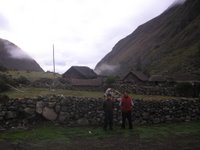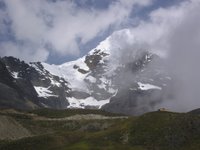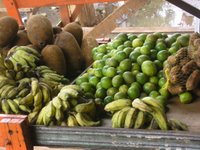Leftwards across Latin America
 Through these travels i realised that i had always been going left on a huge loop from São Paulo on the Atlantic coast of Brazil, through the centre of Brazil to the state of Acre deep in the Amazon, before carrying on out on the other side to emerge in the high Andes and on to the Pacific coast of Lima... then looping back around to Bolivia and Brazil´s capital, Brasilia, once more.
Through these travels i realised that i had always been going left on a huge loop from São Paulo on the Atlantic coast of Brazil, through the centre of Brazil to the state of Acre deep in the Amazon, before carrying on out on the other side to emerge in the high Andes and on to the Pacific coast of Lima... then looping back around to Bolivia and Brazil´s capital, Brasilia, once more.Meanwhile i seem to have been cutting straight across the blistering moment of the revolution- all across South America Leftist movements are boiling to the surface, with deep-seated social demands erupting across the continent. When i arrived in Peru the talk was all of Ollanta Humalla, the tough ex-military man who talks about re-building national pride and does not hide his admiration for Hugo Chavez and Evo Morales. Although his personal background is ambiguous as he has strong military connections, a win for him would cement the growing Leftist consensus across Latin America and he is clearly in favour of a more robust independent Latin American foreign policy...
Less ambiguous is Bolivia´s president, Evo Morales- as an indigenous Aymara and coca-growers´ union leader, he is a more authentic representative of the excluded majority of Latin America. Just as i arrived in Bolivia 2 weeks ago, he marked Labour Day on May 1st with the nationalisation of hydrocarbons (oil and gas) across Bolivia... the country was out on the streets to celebrate but a certain feeling of chaos was in the air! Military occupation of gas fields and a high police presence could not reduce the feeling that suddenly all the rules are changing and outsiders were definitely in a more tenuous position. There is no doubt that Morales has been bold in his first hundred days in office and further reform is likely, as the Bolivians are about to vote for a constituent assembly to draw up the new constitution to combat the legacy of a long history of exploitiation and poverty. Afterall the country still has the lowest GDP per capita of South America, so there is a clear need to provide for the population. There is great wealth in terms of natural resources but ever since Spanish colonial times, these have been providing a very low return for the majority of the country, so there is a case for greater national ownership and the need to channel profits towards social programmes inside the country.
What has been surprising is the hard line Morales has taken in relation to Brazil, while I was in Bolivia, my plans were delayed as the land border to Brazil was closed by civilian action!! The Bolivian government had expelled a Brazilian steel firm, EBX, for environmental and constitutional irregularities but the local Bolivians were on the streets in favour of the Brazilian firm and in disagreement with the national government. However, it is on the issue of the nationalisation of hydrocarbon resources that Bolivia has taken the firmest line, accusing the Brazilian oil giant Petrobras of breaking the Bolivan constitution and threstening to refuse to pay compensation to them for loss of investment. It is true that Petrobras has in the past couple of years made record profits and there is little sympathy for oil barons, however it is surprising that Morales is so tough on Brazil, as this seems to go against his stated aim of bringing South America closer together.
As I just got back into Brazil, have been interested to notice how much more moderate the Brazilian Left seems to be... here people are unsure of Evo Morales and Hugo Chavez, they seem unwillling to take the same leap towards a full nationalist Left agenda and instead Lula´s government has been keen to maintain economic austerity and keep international investor confidence. This may be due to the fact that President Lula lacks a majority in the legislature so he is forced to adopt a position of national unity rather than a strong social reform agenda.
In a similar mode, Argentina and Chile also have moderate Left leaders who seem keen to focus on economic growth but are unwilling to adopt postures that may weaken international trade and investment.
What is nevertheless clear is that Morales has brought a new focus to the action of Hugo Chavez in Venezuela, the first to bring hydrocarbons under national control for a social reform agenda and has created a link through to Cuba´s Fidel Castro and his revolution with Che Guevara. Venezuela and Bolivia signed a free trade agreement with Cuba to counter the highly controversial US plans for a Free Trade Area of the Americas, exchanging hydrocarbons for highly skilled Cuban doctors.
As Brazil is just catching fire in São Paulo´s prisons and the social inequality gap continues to rage in this the largest country in South America, the need for more bold reforms across the board seems to be increasingly present... perhaps this is a continuation of the revolution that was begun by Che Guevara and frozen by the military dictatorships, a chance for greater integration and a new independent consensus in South America- the Brazilians would be foolish to give up their role as leaders of this movement and would be better off embracing the moment to shape the future of all South Americans.












